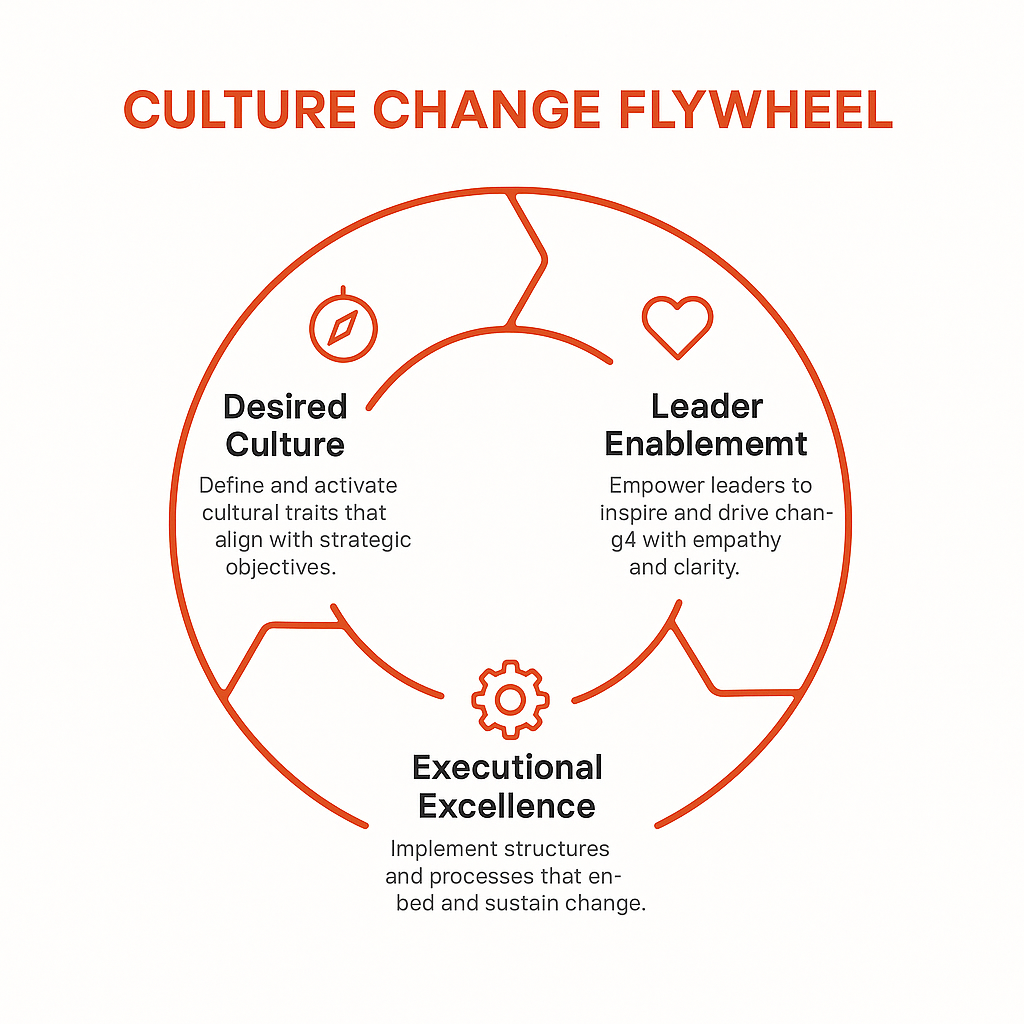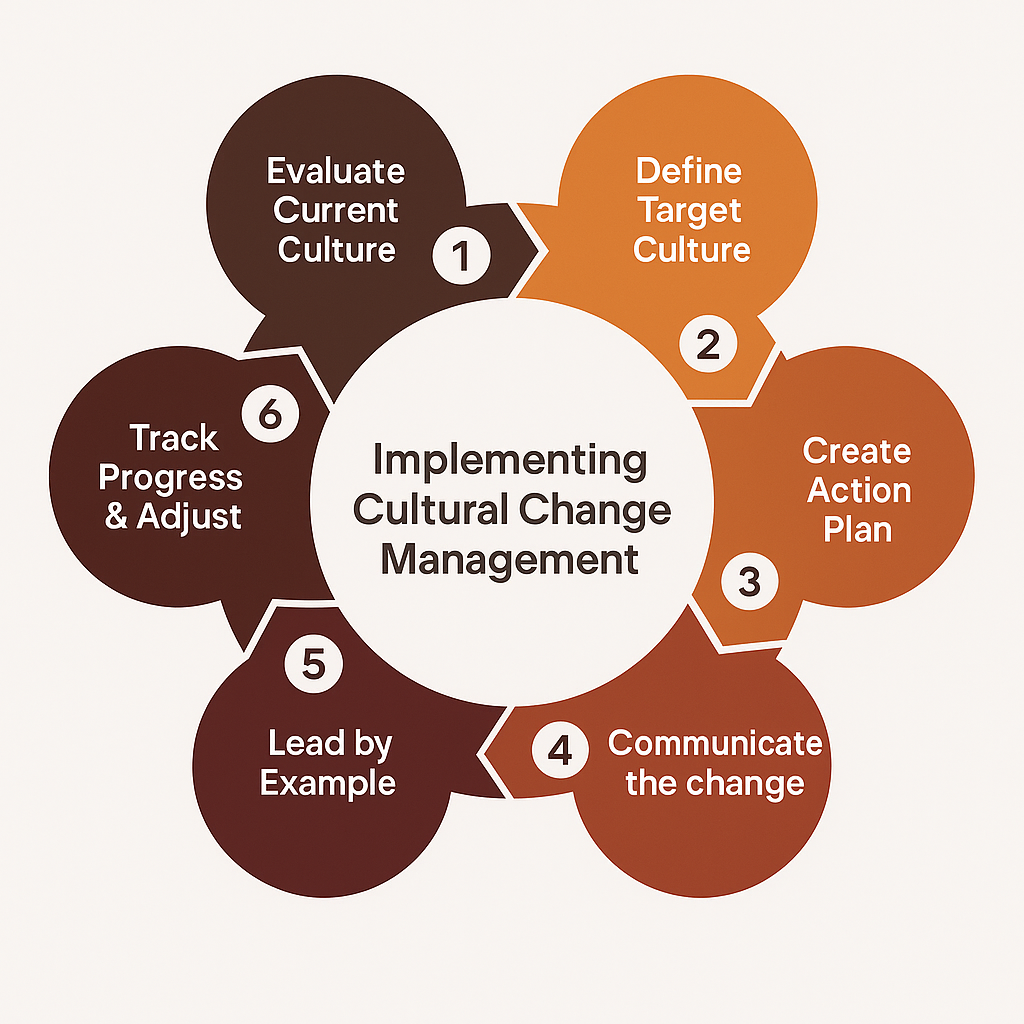Change Management
CultureCulture & Change Management
Change Isn’t the Challenge. Poor Change Execution Is.
Whether it’s AI transformation, regulatory upheaval, or cultural renewal – change has become business-as-usual. Yet more than 70% of change efforts underperform. Why? Because organisations focus on what’s changing, not how to change well.
At T3, we help executive teams cut through the noise and drive change that delivers lasting outcomes – for people, systems, and strategy.
Want to hire Change Management Expert?
Book a call with our experts
Our Approach to Culture & Change Management
Most leaders know change is urgent. Whether driven by AI adoption, regulatory shifts, ESG mandates, or digital competitiveness, transformation is no longer optional—it’s existential. And yet, a persistent disconnect exists between the urgency to change and the capability to deliver it effectively.
This capability gap is where transformation efforts falter. And it’s where T3 Consultants steps in.
We don’t just help you define the change. We help you deliver it in a way that works—for your business, your people, and your customers.
Despite record investments in change programs, most fail to meet their stated goals. Here’s why:
Leadership Misalignment
Change needs sponsorship but not just in name. Many initiatives struggle because their executive sponsors are either invisible, inconsistent, or disconnected from the reality on the ground. Without visible, credible leadership, change lacks direction and legitimacy.
Declining Employee Trust and Engagement
In 2016, 74% of employees said they were willing to support change. Today, that figure has plummeted to just 38%. Why? Because many have been burned by poorly executed transformations: vague strategies, sudden restructures, or software rollouts with no clear benefit.
No Real-Time Insight or Adaptability
Over 50% of executives admit they can’t measure change success with confidence. Without the right data—adoption rates, behavioural metrics, sentiment tracking—organisations can’t steer, course-correct, or understand the hidden frictions.
Change Fatigue is Now a Strategic Risk
Repeated waves of transformation, often without sufficient recovery time, have left workforces weary. In fact, 54% of employees experiencing ongoing change say they’re actively considering leaving their roles. This isn’t just an HR issue—it’s a business continuity risk.
1. Validate and Translate the Change
You know what needs to change.
Our first priority is to validate the ambition by translating high-level ideas into clear, operational impacts across every part of your organisation.
We pressure-test assumptions, map practical realities, and benchmark the desired outcomes against both internal aspirations and external best practices.
This ensures the vision is not just inspirational, but fully executable.
2. Align and Mobilise Leadership
Successful change requires leaders who are aligned, visible, and trusted.
We bring leadership teams together to co-create a shared change narrative, clarify individual leadership roles, and embed the behaviours that signal commitment from the top.
We also activate the critical layer of middle management – the real carriers of change momentum -with targeted coaching and action frameworks.
3. Design for True Adoption, Not Just Delivery
Change succeeds when it becomes personal.
We design adoption strategies that meet people where they are, using behavioural insights, role-based messaging, agile pilots, and early success moments.
Rather than overwhelming teams with mandates, we help them opt into the change – creating ownership, energy, and lasting engagement.
4. Measure What Matters and Adapt Continuously
Change isn’t a straight line.
We equip organisations with real-time change health dashboards, blending quantitative adoption metrics with qualitative sentiment insights.
This enables leaders to course-correct early, spot fatigue before it spreads, and maintain credibility by adjusting with transparency and agility.
5. Embed, Scale, and Future-Proof
The ultimate goal isn’t a “go-live” – it’s durable capability.
We work with you to embed new practices, mindsets, and decision-making rhythms into the business.
We design governance structures that reinforce change without adding bureaucracy and help you build the internal muscle to sustain momentum and scale successes into future transformations.
- Be clear on what truly matters. Understand which tasks will hold up the whole project if they slip, and which ones have breathing room. Not everything is urgent—focus where it counts.
- Keep people in the loop. Regularly connect with stakeholders—not just to report, but to listen. Their buy-in can make or break momentum.
- Keep your team energised. A focused, motivated team will outpace a larger, disengaged one. Help them see the bigger picture and remind them why the work matters.
- Don’t fool yourself. Know what’s actually happening on the ground—not just what’s written in the tracker. Real insight comes from honest conversations and a clear line of sight.
- Mark the wins. Acknowledging progress isn’t a distraction—it’s fuel. Celebrate small victories to build confidence for the bigger push ahead.

What is the Culture Change Flywheel?

How to implement cultural change management?
What is CSRD Reporting for Small Businesses? Explained Simply
What is CSRD Reporting? CSRD (Corporate Sustainability Reporting Directive) is a framework that seeks to increase transparency and accountability in corporate sustainability practices. It mandates comprehensive reporting on sustainability,...
US AI Regulation for Business: Current State & Laws
The Changing Landscape of U.S. AI Regulation Given the increasing deployment of artificial intelligence solutions by companies, the need to understand and navigate the changing landscape of U.S. AI...
Avoid Change Management Pitfalls in Organizations
Change Management: Navigating the Complexities of Modern Business In the current fast-paced business environment, good change management enables organizations to keep pace and remain competitive and agile. With constant...
AI Change Management: Revolutionizing Organizational Strategies
In today’s fast-evolving business environment, AI is driving change management functions, altering how organizations respond to challenges and opportunities. The role of AI in change management is particularly profound...
200+
Project delivered across sectors
4x
Succeed in digital transformation when piloting & using iterative models
80%
80% of business should review their strategy every 2-5 years
WHO DOES IT IMPACT?
All firms looking to reduce cost
Asset Managers
Banks
Commodity House
Fintechs
How Can We Help?
1
Strategic Cost Transformation
T3 Consultants assist businesses in undertaking comprehensive cost transformation programs, focusing on long-term efficiency and growth rather than just short-term expense cuts.
They specialize in eliminating waste, optimizing processes, and aligning costs with business strategy without undermining compliance with minimum standards or ESG targets.
2
Operational Excellence
T3 works with companies to streamline their operations and implementing lean management principles by leveraging innovation in a way that support decision makers and meets regulatory expectations.
3
Digital Transformation
T3 works with vendors and in-house IT teams on integrating digital technologies into their business models.
This encompasses managing procurerements and roll-out of project involved with automating processes, implementing advanced analytics, and adopting cloud-based solutions. Through digital transformation, businesses can achieve substantial cost savings by improving efficiency and decision-making.
4
Organizational Restructuring
T3 provides expert guidance on organizational design to ensure that a company’s structure is efficient and strategically aligned.
This may involve upskilling functions, reorganizing departments, or redesigning roles and responsibilities to cut redundancies and foster organizational agility.
Frequently Asked Questions
For SMEs, strategies such as renegotiating supplier contracts, automating repetitive tasks, and improving workflow efficiency are especially effective. We tailor solutions to your unique size and sector to ensure you achieve measurable, sustainable cost savings.
Plan: Set clear goals and strategy.
Communicate: Share the vision and benefits with everyone involved.
Implement: Roll out changes in a structured, supportive way.
Review: Check progress, gather feedback, and make improvements.
Sustain: Lock in changes by embedding them into daily routines and culture.
Clarity: Make the purpose and benefits of change obvious.
Communication: Keep everyone informed, involved, and heard.
Consistency: Align actions and messages across all levels.
Commitment: Secure buy-in from leadership and the wider team.
Celebration: Recognize and reward milestones and success.
Reason: Why is this change needed?
Risk: What could go wrong – and how do we handle it?
Resources: Do we have what we need to succeed?
Return: What’s the benefit or payoff?
Responsibility: Who’s accountable for each part?
Relationship: How will this affect people and teams?
Results: How will we know we’ve succeeded?
We embed best practices into your processes and train your teams for ongoing success. Our approach combines technology, process reengineering, and change management, ensuring improvements are lasting and aligned with your organizational goals.
Absolutely. Lean management can drive value in service industries, healthcare, financial services, and beyond. Our team has a proven track record applying lean management across sectors, always customizing our approach to your needs.
Results vary by client, but our interventions typically result in cost reductions between 10-20%, process cycle time reductions, improved compliance, and higher employee satisfaction.
Want to hire
Change Management
Expert?
Book a call with our experts
If you want truly to understand something, try to change it.
Kurt Lewin

